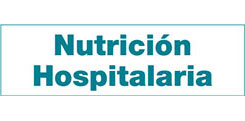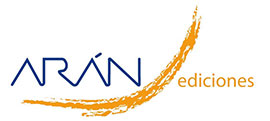Trabajo Original
Antigenotoxicidad de la isoflavona de soya genisteína en ratones expuestos a compuestos cancerígenos del cromo hexavalente
María del Carmen García-Rodríguez, Gabriela Abigail Valle-Castillo, Lourdes Montserrat Hernández-Cortés
 Número de descargas:
8159
Número de descargas:
8159
 Número de visitas:
2786
Número de visitas:
2786
 Citas:
0
Citas:
0
Compártelo:
Introducción: el consumo de alimentos ricos en antioxidantes como las isoflavonas de la soya puede ser una alternativa en la protección y modulación de la genotoxicidad de metales con potencial cancerígeno asociado al estrés oxidativo. Objetivo: evaluar el efecto antigenotóxico de la isoflavona de soya genisteína en ratones expuestos a compuestos cancerígenos de cromo hexavalente (Cr[VI]). Material y método: veinticinco ratones Hsd:ICR macho fueron divididos en cinco grupos tratados de la siguiente forma: a) vehículo 1 (agua destilada estéril, vía-oral); b) vehículo 2 (aceite de maíz para compuestos liposolubles, vía-intraperitoneal); c) 15 mg/kg de genisteína, vía-oral; d) 20 mg/kg de CrO3 vía-intraperitoneal; y e) 15 mg/kg de genisteína cuatro horas antes de la aplicación de 20 mg/kg de CrO3. Se realizaron evaluaciones de micronúcleos (MN), apoptosis, relación de eritrocitos policromáticos/normocromáticos (EPC/ENC) y viabilidad celular en sangre periférica obtenida a las 0, 24, 48 y 72 horas. Resultados: el tratamiento con genisteína redujo los MN cuando fue administrada previamente al tratamiento con CrO3, siendo mayor el efecto a las 48 horas (reducción del 84 %). La viabilidad celular se redujo con los tratamientos de genisteína y CrO3 solos, siendo mayor el efecto en este último. Conclusiones: la genisteína bloqueó eficazmente la acción genotóxica del CrO3. El hecho de que se redujeran los MN y la apoptosis en el grupo tratado con la genisteína y el CrO3 sugiere que la genisteína pudo haber inhibido el daño oxidativo del Cr(VI) ya que, al no haber células con daño, las vías apoptóticas no se activaron.
Palabras Clave: Genisteína. Antigenotóxico. Cr(VI). Glycine max. Apoptosis. Isoflavonas.
DOI: 10.3390/antiox10071064
DOI: 10.2174/1385272820666160928120822
DOI: 10.1016/j.ijpharm.2016.07.078
DOI: 10.3390/nu11071660
DOI: 10.3389/fphar.2019.01336
DOI: 10.1007/s13318-012-0112-y
DOI: 10.1016/j.biopha.2016.05.023
DOI: 10.1021/jf0488099
DOI: 10.1016/j.mrfmmm.2003.09.006
DOI: 10.5772/intechopen.76651
DOI: 10.1016/S1383-5718(01)00225-X
DOI: 10.1155/2013/486419
DOI: 10.1016/S1734-1140(09)70035-0
DOI: 10.1128/AAC.00456-18
DOI: 10.1016/0165-7992(90)90153-B
DOI: 10.1016/0003-9861(92)90085-B
DOI: 10.1016/j.jpha.2014.07.003
DOI: 10.1093/carcin/bgl082
DOI: 10.1016/j.cyto.2017.10.008
DOI: 10.2174/1876822901003010086
DOI: 10.1016/j.canlet.2015.06.008
DOI: 10.3892/ijo.2013.1946
DOI: 10.1016/j.chemosphere.2021.129735
DOI: 10.1016/j.taap.2004.02.011
DOI: 10.1016/j.freeradbiomed.2015.05.030
DOI: 10.1080/07391102.2008.10507191
DOI: 10.1016/0278-6915(95)00062-7
DOI: 10.3109/00365519309090693
DOI: 10.1007/s11356-021-12629-y
DOI: 10.1007/s12640-020-00243-8
DOI: 10.1002/mnfr.201800635
DOI: 10.1016/j.taap.2007.06.022
DOI: 10.1016/j.toxlet.2004.04.005
DOI: 10.1002/ijc.22228
Artículos Relacionados:
Trabajo Original: Protection by polyphenol extract from olive stones against apoptosis produced by oxidative stress in human neuroblastoma cells
Ernesto Cortés-Castell , Carmen Veciana-galindo , Luis Torró-montell , Antonio Palazón-Bru , Elia Sirvent-Segura , Vicente Gil-guillén , Mercedes Rizo-baeza
Trabajo Original: Diet and liver apoptosis in rats: a particular metabolic pathway
Maria Emilia Lopes Monteiro , Analucia Rampazzo Xavier , Vilma Blondet Azeredo
Trabajo Original: Altered membrane lipid dynamics and chemoprevention by non-steroidal anti inflammatory drugs during colon carcinogenesis
Trabajo Original: El té verde en la quimioprevención in vivo del daño genotóxico inducido por metales cancerígenos (cromo [VI])
Revisión: Antitumor effect of oleic acid; mechanisms of action. A review
Trabajo Original: Nori- and Sea spaghetti- but not Wakame-restructured pork decrease the hypercholesterolemic and liver proapototic short-term effects of high-dietary cholesterol consumption
Revisión: Isoflavonas de soya y evidencias sobre la protección cardiovascular
Trabajo Original: Dietary ratios of n-6/n-3 polyunsaturated fatty acids during maternal pregnancy affect hippocampal neurogenesis and apoptosis in mouse offspring
Trabajo Original: Efecto in vivo del vino tinto sin diluir, diluido (75%) y sin alcohol sobre el daño genotóxico inducido por metales pesados con potencial cancerígeno: cromo [VI]
Revisión: Bebidas de soja y salud femenina. Revisión de la evidencia y opinión de expertos
René Bailón-Uriza , José Antonio Ayala-Méndez , Cuauhtémoc Celis-González , Jesús Chávez-Brambila , Imelda Hernández Marín , Juan de Dios Maldonado-Alvarado , Javier Montoya-Cossío , Fernanda Molina-Segui , Abraham May-Hau , Pilar Riobó Serván , Eduardo Neri-Ruz , Antonio Peralta-Sánchez , Eduardo Reyes , Roger Rosado-López , Martin Tulio Santa Rita-Escamilla , Gilberto Tena Alavez , Hugo Laviada Molina
Artículos más populares
Revisión: Inteligencia artificial generativa ChatGPT en nutrición clínica: avances y desafíos
ChatGPT y otras herramientas de inteligencia artif...
Revisión: Suplementación con micronutrientes y sus beneficios: ¿por qué y cuándo?
Introducción: los micronutrientes participan en la...
-
Licencia creative commons: Open Access bajo la licencia Creative Commons 4.0 CC BY-NC-SA
https://creativecommons.org/licenses/by-nc-sa/4.0/legalcode




